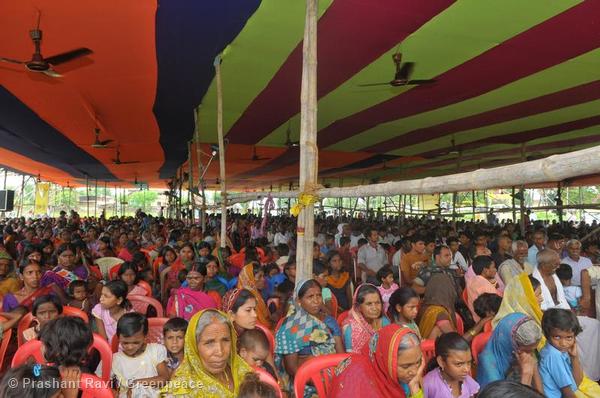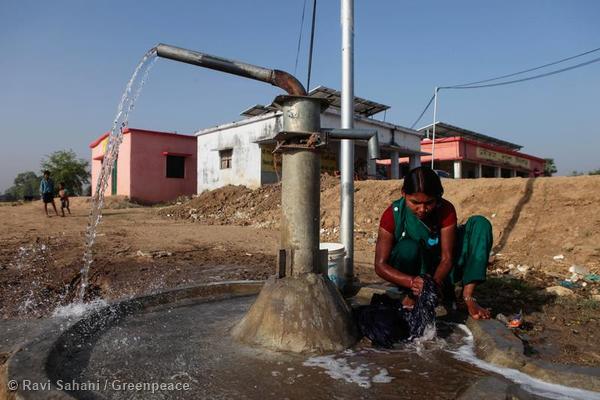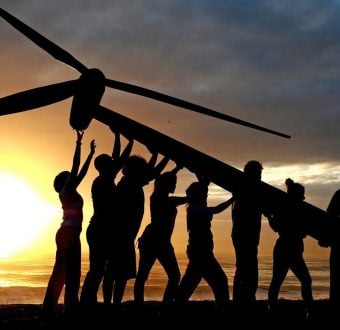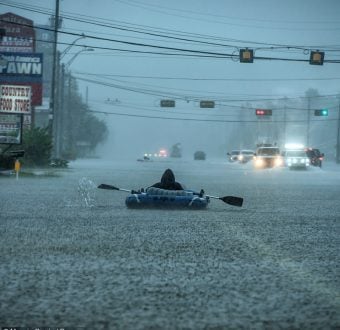By Neha Khator and Ruhie Kumar
In this world where we seem surrounded by news of gloom and doom, we don’t often hear stories of positive change.
But here is one: a story of a village that has unshackled itself from darkness, after 30 years of having its energy needs neglected by governments.
Today, Dharnai is blooming with hope and ambition.
Dharnai village in Bihar, one of India’s poorest states, is now lit-up by a Greenpeace India solar-powered micro-grid.
Enter the village and you’ll see electric poles all around. The solar micro-grid supplies the electricity for homes, street lighting for roads and lanes, and water pumps.
Dharnai is the first village in India where all aspects of life are powered by solar. The 100 kilowatt (kW) system powers the 450 homes of the 2,400 residents, 50 commercial operations, two schools, a training centre and a health care facility. A battery backup ensures power around the clock.
The secure power supply of the new solar micro-gridhas brought immense benefitsto the community. Household lighting, agriculture, business activity and social infrastructures like schools, and health centers all have guaranteed electricity.
Reliable electricity in the evening has improved educational opportunities for village children, and brought the safety of street lighting. A dependable power supply has boosted the local economy, and brought a welcome improvement to the social life of the villagers.
Thebetter quality of life of Dharnai residentshas become the talk of neighbouring villages, all eager to understand and replicate the Dharnai model.
The story of the Greenpeace micro-grid project inspiring. It is unbelievable to see an entire village lit-up by solar energy. It illustrates how, in a country like India, universal energy access can be achieved without compromising the environment with coal pollution.
It’s motivating because the affordable micro-grid became a reason for an entire community to join hands and work together to solve its energy problem, and to make this project a success. What a privilege it is to see sign boards on the highway saying: Dharnai Solar Village 1 km ahead.
We have done it with the support of the villagers of Dharnai, and with partnersBASIXandCEED. After two months of successful testing, we launched the micro-grid on Sunday 20 July with the eldest person of Dharnai (80 years old) formally switching it on in front of a supportive crowd of thousands.
With an electricity system in place after 30 years of waiting, Dharnai now has all the elements to build a strong local economy. Their progress is no longer thwarted by a lack of electricity.
Dharnai shows a way forward for thousands of other villages everywhere which have been left behind. These villages can develop their own clean power and contribute to saving their environment by showing we don’t need to use nuclear, coal or other fossil fuels for energy.
Dharnai is just the beginning. India has 80,000 more villages that need solar micro-grids. Greenpeace India will work to build greater collaboration to ensure all get access to clean, reliable electricity.
There is a story here that goes well beyond India. Hundreds of millions live without electricity. For them, the Dharnai solar-powered micro-grid could be a game-changer, a model for bringing clean, reliable energy to those energy-starved millions.
Communities without electricity, and their governments, can take a leap forward and develop the innovative solar systems. And comunities can avoid the energy systems of the past that plague the world and build a clean energy system they can own and control.
To learn more, please visit: dharnailive.org
Neha Khator is a media consultant and Ruhie Kumar is a digital media consultant for Renewable Energy with Greenpeace India.





